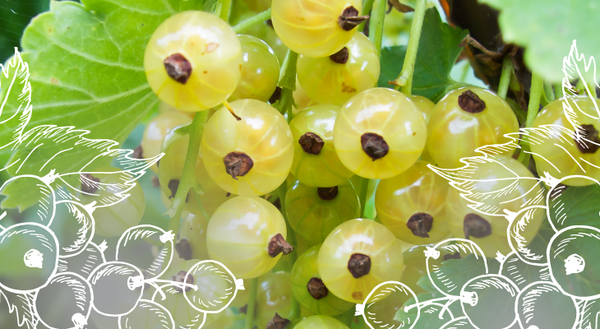
Gardening enthusiasts on the lookout for unique garden additions should make space for red and white currant shrubs.
Incorporation of perennial fruits in the garden is trendy and smart – they provide both ornamental value and food. With the addition of white currant (Ribes sativum) and red currant (Ribes rubrum), your garden will become a trendsetting site: re-establishing a historically relevant plant that doubles as a delectable culinary treat.
Red and white currants have their roots in Europe where they have been cherished for centuries.
Both held cultural importance as an ingredient in a variety of European foods and beverages, despite originating in different regions: central Europe for white currants and the cool regions of western Europe for red currants. Some of the earliest records of currant cultivation date back to monasteries of 350 AD, according to government records of Iceland.
After traveling to the Americas with Europeans, currants became a popular ingredient in American cuisine for almost a century.
In fact, advertisements to buy the plants appeared in Harper’s Weekly during the Civil War. With national popularity, what caused the craze for currants to disappear?
Shockingly, currants (and the related gooseberry) were banned in 1912.
According to Utah State University Extension, currants can carry white pine blister rust – a disease affecting white pine (Pinus strobus). A federal ban was enacted to protect a booming industry – timber mills. In 1966, the federal ban on all Ribes spp was lifted; Illinois did not officially lift the state level ban until 2003. Now, with a century of cultivation lost, University of Illinois Extension Research Farm in Urbana, IL is rediscovering cultivation practices of this forbidden fruit.
University of Illinois Extension Research Farm explores potential for commercial production of currants.
Since 2011, the research farm has trialed currants for commercial production and discovered the historical white and red currants are no match for black currants in large-scale production.When tested together, the black currants demonstrated more upright growth habit in the full sun field conditions of commercial production, as well as higher overall yields. (An upright growth habit is an excellent trait for commercial harvesting.) Despite the findings, red and white currants are still great additions to homestead plantings and community gardens, such as the Refuge Food Forest.
Growing conditions for red and white currants
With a decade of trials complete, a field of healthy and fruit-covered specimens indicates currants can thrive in Central Illinois. Currants prefer well-drained soil enriched with organic matter and perform best (maximum berry production) when planted in full sun (6+ hours of direct sunlight). However, recent research has confirmed that many currant varieties need just four hours of direct sun to produce a respectable berry crop, making them ideal for partially shaded gardens. In fact, red and white currants are planted in a part sun location at The Refuge Food Forest.
With a mature size of three to five feet tall and wide, currants should be spaced more than five feet apart to ensure good air circulation at maturity. With attractive foliage and vibrant berries, this edible shrub is a versatile addition to the yard or garden. Although self-fertile, cross-pollination increases berry yields, so consider planting two or more varieties to boost fruit production.
Bountiful Harvest and Culinary Delights
Red and white currants are an early ripening berry crop – berries mature in mid-June. Offering a bounty of flavors, white currants are sweeter than red currants. While both are used in sweet dishes, red currants work well in savory dishes too. With a vibrant and tangy flavor, red currants are great for pies, tarts, and cakes – where the flavor can shine through. The balance of sweet and tart in white currants is a nuanced flavor profile perfect for garnishing fruit salad, yogurt, or ice cream while the translucent appearance of white currants lets them shine in simple jams or jellies.
Try this historically forbidden fruit at The Refuge Food Forest, 701 E. Lincoln St, Normal, IL on June 28. Visit go.illinois.edu/lmw/events to learn more.
ABOUT THE AUTHOR: Nick Frillman is a Local Foods and Small Farms Educator serving Livingston, McLean, and Woodford Counties. A fourth-generation graduate from University of Illinois, Frillman has a B.A. with a double major of Political Science and Spanish and a M.S. in Crop Science with a focus on crop production. Before joining Illinois Extension, Frillman completed a field season of CSA and farmers’ market-style production at a small “beyond-organic” vegetable farm in Sandy, Oregon.
ABOUT THE EDITOR: Liz Repplinger is the Agriculture and Natural Resources Program Coordinator serving Livingston, McLean, and Woodford Counties. A Bloomington-Normal native, Liz earned a B. A. in Animal Science and an M.S. in Animal Science from Illinois State University. She has enjoyed contributing to the multiple facets of Extension including previous support of the 4-H Youth Development Program as a program coordinator and current support of Unit and Statewide Diversity, Equity and Inclusion Initiatives.